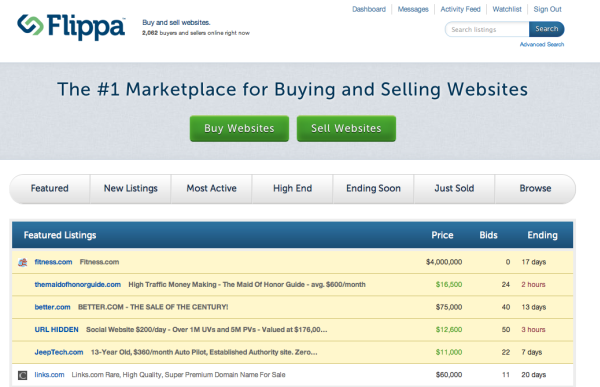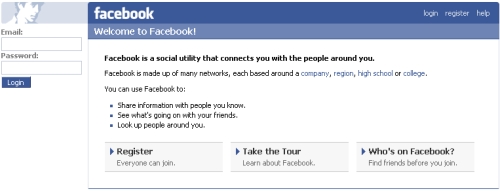In the spirit of featuring case studies like the ones in Chapter 4 of The New Community Rules, I am going to highlight other companies that have excelled in their social media achievements. Are you a company or do you know a company that has immersed itself in the social media waters and succeeded? Contact me and share your story.
 I’ll be perfectly up front when I say that I’m not very familiar with most charities and nonprofit organizations. There are a few charities and non-profit organizations that have a huge presence on traditional media — you probably can’t help but notice the UNICEF commercials on TV during the winter out here in the states — but outside of Beth’s actual blog on the subject matter, I really haven’t grasped the magnitude of just how many nonprofits exist out there (hint: there are a lot).
I’ll be perfectly up front when I say that I’m not very familiar with most charities and nonprofit organizations. There are a few charities and non-profit organizations that have a huge presence on traditional media — you probably can’t help but notice the UNICEF commercials on TV during the winter out here in the states — but outside of Beth’s actual blog on the subject matter, I really haven’t grasped the magnitude of just how many nonprofits exist out there (hint: there are a lot).
As small companies with limited budgets, nonprofits may feel that they are unable to dive into the wide world of social media. But small is the new big and some small businesses have seen a whole lot of unprecedented success. It’s something that may have previously been thought as impossible. Thanks to social media, anyone can make waves. Are you on board?
How do nonprofits go about the social media landscape? This is a good question and one that Epic Change has mastered rather successfully. I’ve been able to speak with both Stacey Monk (@staceymonk), founder and CEO, and Avi Kaplan (@meshugavi), Director of Communications (aka “Bringer of Awesome”) at Epic Change, about the organization’s involvement.
The big catch: Epic Change is not a large company at all. Avi is the company’s newest hire, bringing the grand total of people working for Epic Change to three (thereby giving me an opportunity to speak with 67% of the entire staff!). But yet, despite perhaps not having substantial manpower or resources available, Epic Change has made waves of epic proportions in the social media charity world — at least from my perspective.
Why social media?
Epic Change decided to dabble in social media, because as Stacey says, it was “a way to cultivate a community of support for Epic Change.” After leveraging guest posting on a blog to successfully get more followers on Twitter, Stacey found Twitter to be a necessary addition to her social media strategy. More importantly, Epic Change has a mission to empower individuals to tell stories in order to acquire financial resources to make positive change in their communities. Since the organization’s mission relies on storytelling, Stacey says, “social media represented a way for us to share those stories with the broadest possible audience for the lowest possible cost.”
Epic Change brought social media into the mix for other reasons as well. The organization wanted to build connections in open and transparent communities. They wanted to reach a broad audience to help raise money quickly to achieve their missions. They wanted to use media that was free. Epic Change considers itself a startup nonprofit organization, and as such, money isn’t in abundance. Epic Change’s success obviously means that the tools they used, where the barriers for entry are rather low, are working.
Interactions
We’ve seen the motivations for Epic Change to get involved in the social media space, but what do they do? The Epic Change team uses its blog to expound upon its mission and to share and spread ideas. Because of their success both in the social media space and as a charitable organization, the blog itself has supporters who “look to us for reflection about our experience as a startup nonprofit and as an organization with experience in the developing world,” Avi says. The blog is primarily managed by Stacey, who humanizes the process with an emotional and occasionally humorous tone.
The three staff members also maintain their personal Twitter accounts (@SanjayPatel is the third) and use these (and a primary @EpicChange account) to spread ideas and to interact with followers. Avi explains, “Twitter lets us take relationships deeper and convert supporters to active volunteers.” But Twitter is the tip of the iceberg. Epic Change merely starts with Twitter; the conversations are then moved offline and interested parties are sent the phone number to the organization’s headquarters so that they can discuss how to help with one of the staff members in terms of getting involved to make a difference.
Major Initiatives
 Have you heard of TweetsGiving? It was one of the first charity initiatives on Twitter. In November 2008, during the week of the Thanksgiving holiday, Epic Change leveraged Twitter to raise money ($10,000 goal) to help build a classroom in Tanzania. In 48 hours, that goal was met from 336 unique donors. Not only was money raised, Epic Change found a slew of new volunteers who were interested in the causes the organization seeks to support. Why did it work? It was more than just a sheer charity initiative. Using the holiday where most Americans express their thanks, a part of the TweetsGiving initiative was to act as a creativity catalyst, asking people to tweet what they were thankful for with the #tweetsgiving hashtag. All in all, there were over 3,500 tweets expressing gratitude for something in their lives. Avi explains, “the emotion that people were sharing in these messages was overwhelming. Gratitude is an emotion that also lends itself well to other media like video, images, music, and blogging, and we saw some of that as well. It’s emotional content in whatever media you express yourself best in.”
Have you heard of TweetsGiving? It was one of the first charity initiatives on Twitter. In November 2008, during the week of the Thanksgiving holiday, Epic Change leveraged Twitter to raise money ($10,000 goal) to help build a classroom in Tanzania. In 48 hours, that goal was met from 336 unique donors. Not only was money raised, Epic Change found a slew of new volunteers who were interested in the causes the organization seeks to support. Why did it work? It was more than just a sheer charity initiative. Using the holiday where most Americans express their thanks, a part of the TweetsGiving initiative was to act as a creativity catalyst, asking people to tweet what they were thankful for with the #tweetsgiving hashtag. All in all, there were over 3,500 tweets expressing gratitude for something in their lives. Avi explains, “the emotion that people were sharing in these messages was overwhelming. Gratitude is an emotion that also lends itself well to other media like video, images, music, and blogging, and we saw some of that as well. It’s emotional content in whatever media you express yourself best in.”
Earlier this year, Epic Change also utilized business/entrepreneur social media site Ideablob to help raise money to build a technology lab at a Tanzanian school. Using social media, primarily Twitter, to garner votes for the project, in addition to a mountain of email and phone outreach, Epic Change won the contest and will be building the lab at Shepherds Junior School in Tanzania. Avi gets excited at the prospect, as this will be a first computer class for every student in the room. He says, “The Internet in general is going to blow their minds. Most of these kids have never seen the ocean, let alone been able to ask questions about anything and have answers to their curiosity at their fingertips. We’re thinking about how to bring social media into the mix for them because of the relationships and connections to people around the world it makes possible. These kids have a voice too and social media may play a role in helping our community hear it better and easier (at all!).”
Other Bonuses
As mentioned earlier, Avi was Epic Change’s newest hire. A recent college graduate, Avi has been involved in Twitter and subscribed to the organization’s blog. Avi became acquainted with Stacey and exchanged a few @replies on Twitter after Epic Change solicited interns and virtual volunteers. Through phone communication, collaboration on TweetsGiving, and in-person meetings at industry conferences, including NTEN’s Nonprofit Technology Conference in April, their relationship blossomed. Avi finally joins the organization’s staff this month. He calls this “social media human resources.”
The Future
This isn’t the end for Epic Change. Stacey says that there’s a lot more to the growth of Epic Change and she thanks social media for the opportunities afforded to the organization’s great strides. She makes some great comments on the success of social media. “Social media is making change possible,” she says, explaining that “with social media, we’re able to hear totally new voices who might not have had access to mainstream channels, which represents a real shift in power, and where change can originate.” She goes on to say that “social media is making change human again.” This element relates to charities and how the individual donor, after money is given, does not have much subsequent involvement. But with social media, this is no longer the case. “With the advent of social media, we have the capacity to re-connect those who give directly to those to whom they’re giving in some way — to restore that sacred, authentic transaction of one human helping another human and the joy, gratitude and sense of connectedness it engenders.”
Epic Change is not done with their involvement. Expect big things from them this Thanksgiving holiday.
And finally, a fun related fact: Avi and I went to the same day school. He’s 5 years my junior but we reconnected in 2008 and now look at how he’s grown! 🙂





Epic Change got their first, that what really made it for them (at least by the sound of things).
Most of us however won’t get their first, we need to build up trust between the organization and it’s consumers (or doners).
Yes, She is absolutely right about social media. It’s a nice way to get in touch with consumer and have a good and healthy conversation. Yes “Social media is all about making changes”.